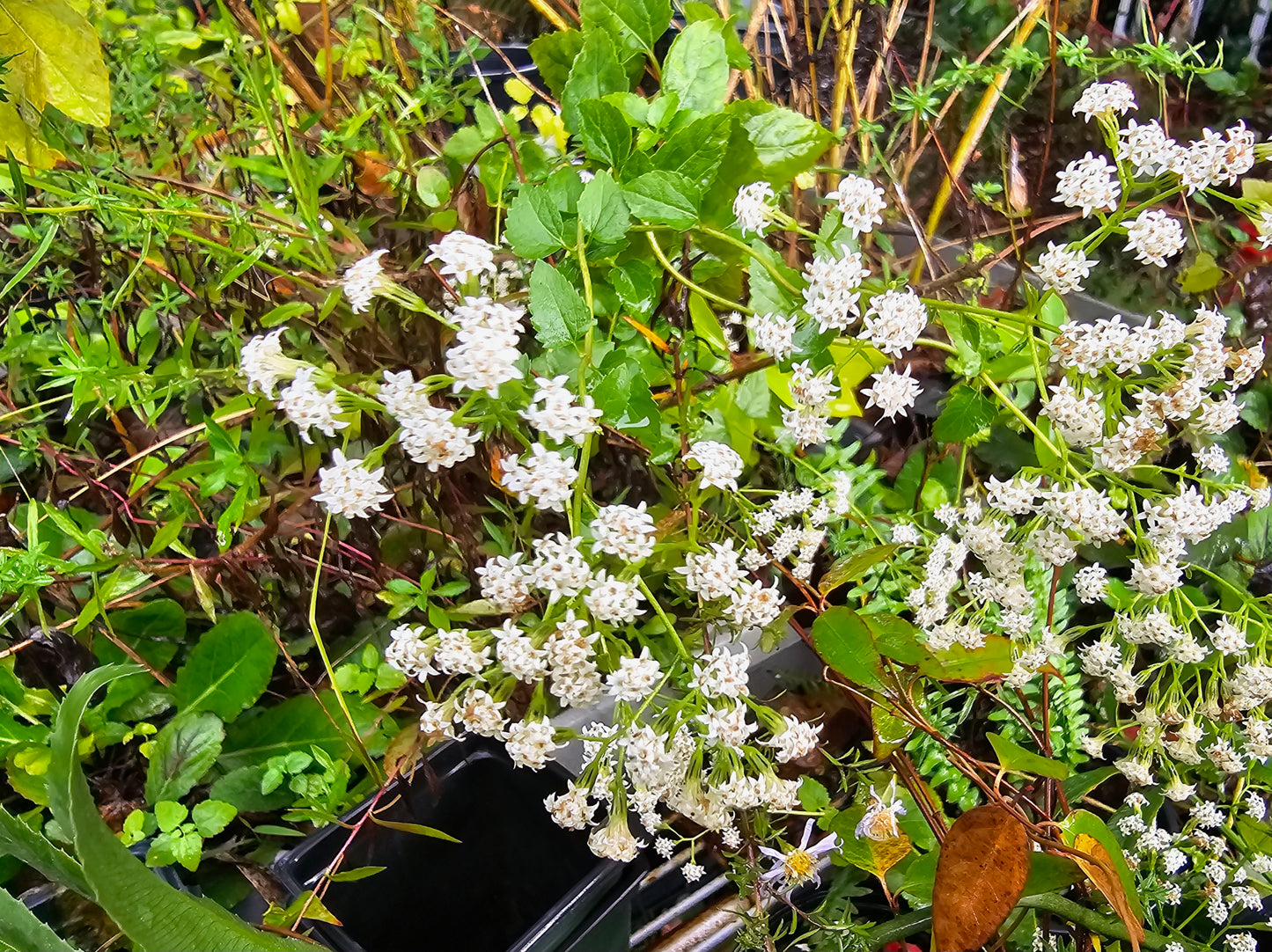Gnarly Nursery
Ageratina jucunda, Hammock Snakeroot
Ageratina jucunda, Hammock Snakeroot
Out of stock
Couldn't load pickup availability
<body><title>Ageratina jucunda</title><style> body { background-color: #485632; color: #FFFFFF; /* Set text color for better visibility on the dark background */ margin: 0; padding: 20px; } --></style> <div style="background-color: #ebe5da; color: #000000; width: 90%; margin: 0 auto; padding: 20px; border: 6px solid #485632;"> <h1 style="text-align: center;"><i>Ageratina jucunda</i></h1> <h3 style="text-align: center; font-weight: bold; margin-bottom: 5px;">Synonym(s)</h3> <p style="text-align: center; margin-top: 5px; margin-bottom: 15px;"><i>(Eupatorium jucundum, Eupatorium incisum, Ageratina aromatica var. incisa, Eupatorium aromaticum var. incisum)</i></p> <h2 style="text-align: center;">Hammock Snakeroot</h2> <dt><b>Phonetic Spelling</b></dt> <dd>ad-jur-uh-TY-nuh joo-KUN-duh</dd> <dt><b>Description</b></dt> <dd>Hammock snakeroot (Ageratina jucunda) is a low-growing, herbaceous perennial shrub with a woody base. It is found in pine flatwoods, sandhills, hammocks, upland mixed woodlands, and along roadsides and stream banks throughout Florida’s peninsula and eastern Panhandle. It blooms in late summer through early winter (typically September through January), attracting a variety of butterflies, including hairstreaks, Julias, skippers and crescents. Bees and hummingbirds like it, too, but the plant is poisonous to both humans and livestock if ingested. Like other members of the Eupatorieae tribe of the Aster family, Hammock snakeroot’s flowers have no ray florets only disk florets are present. They are white, tubular and born on in flat-topped clusters on branched stems. Leaves are petiolate and deltoid to narrowly rhombic with serrate margins. They are oppositely arranged and often drooping. The species epithet jucunda comes from the Latin jucundus, which means “pleasing” or “delightful.”</dd> <br /> <dt><b>Family</b></dt> <dd><i> Asteraceae</i></dd> <dt><b>Native Range</b></dt> <dd>Eastern panhandle and throughout peninsular Florida. To see where natural populations of hammock snakeroot have been vouchered, visit florida.plantatlas.usf.edu.</dd> <dt><b>Hardiness Zone(s)</b></dt> <dd>8B-11</dd> <dt><b>Lifespan</b></dt> <dd>Herbaceous Perennial</dd> <dt><b>Habitats</b></dt> <dd>Well-drained uplands</dd> <dt><b>Exposure</b></dt> <dd>Full sun to partial shade</dd> <dt><b>Growth Habit</b></dt> <dd>2–3 feet tall (usually taller than wide)</dd> <dt><b>Soil Type</b></dt> <dd>Well-drained sandy soil</dd> <dt><b>Propagation</b></dt> <dd>Seed</dd> <dt><b>Moisture</b></dt> <dd>Moist to somewhat dry</dd> <dt><b>Salt Spray Tolerance</b></dt> <dd>Low; salt wind may burn the leaves.</dd> <dt><b>Recommended Uses</b></dt> <dd>Hammock snakeroot makes a nice low shrub border, but also works well in naturalistic plantings and in mixed beds. It can tolerate short periods of drought once established.</dd> <dt><b>Pot Size</b></dt> <dd>trade gallon</dd> </div> </body>
Share

